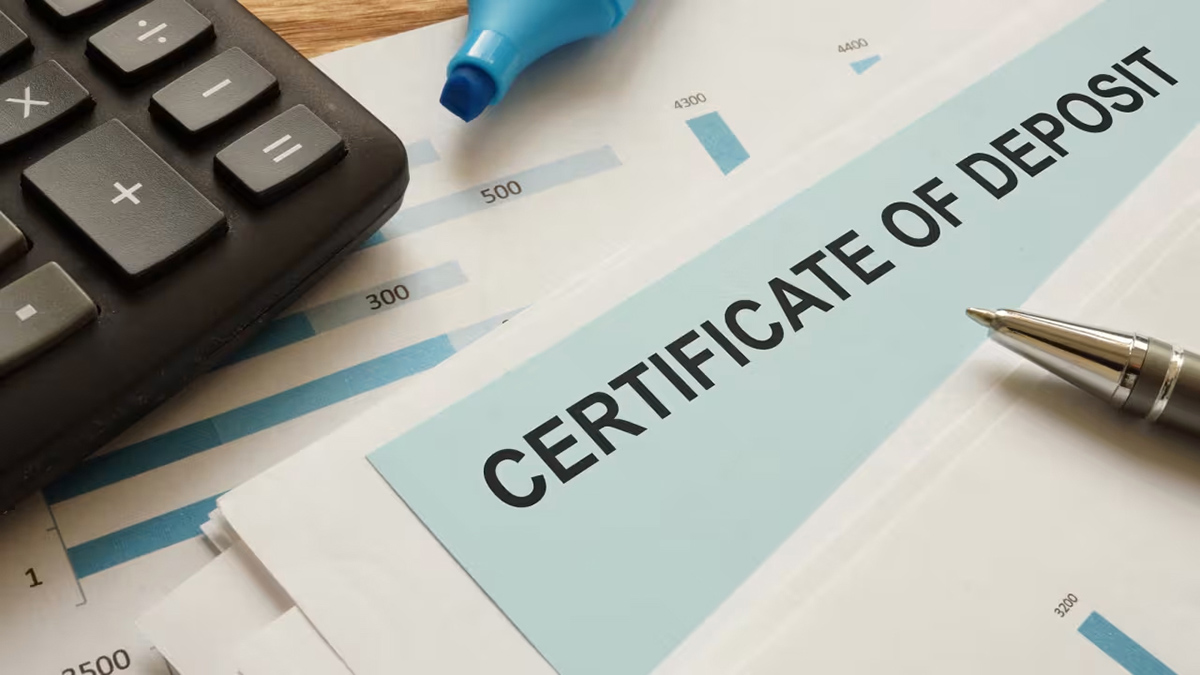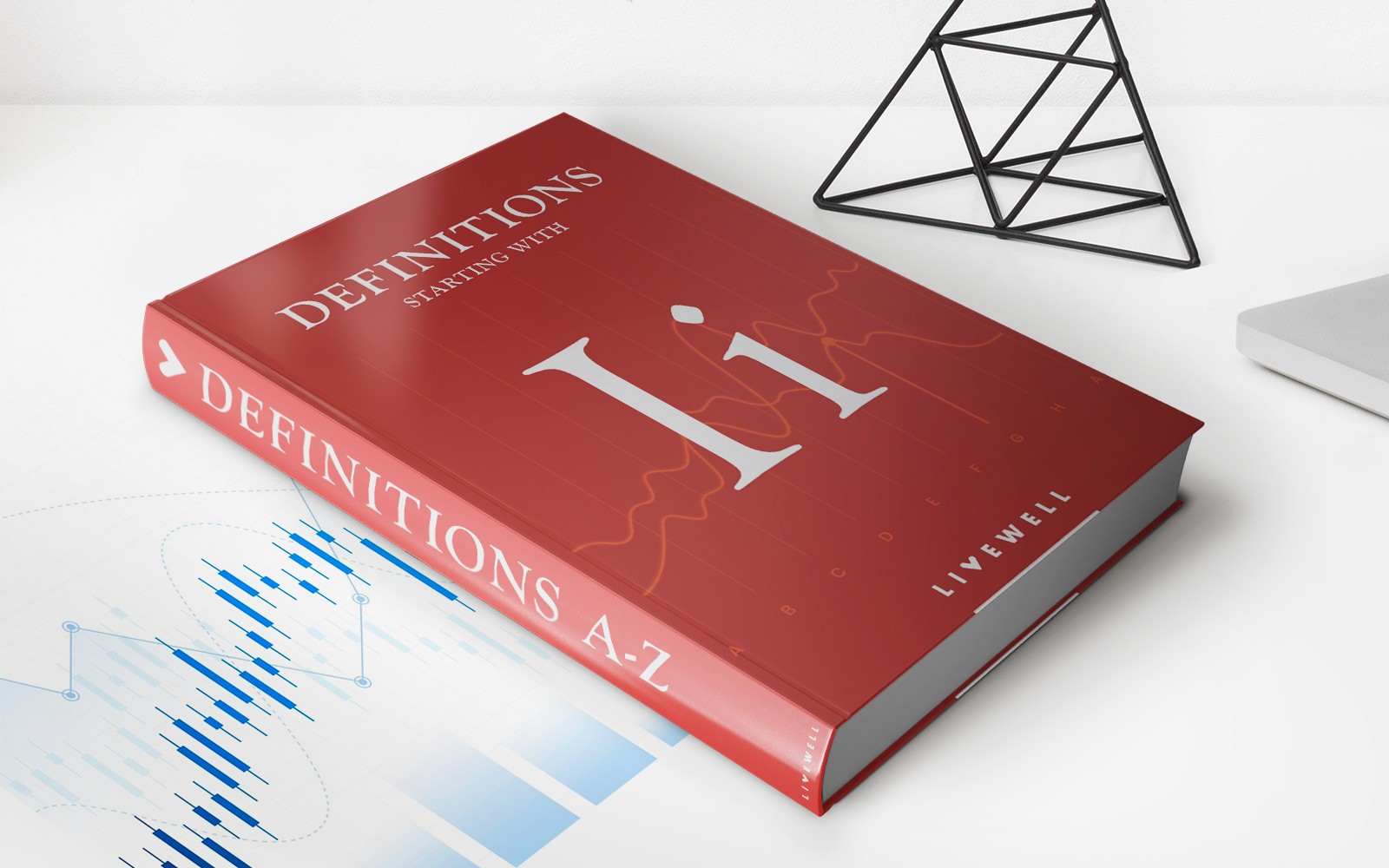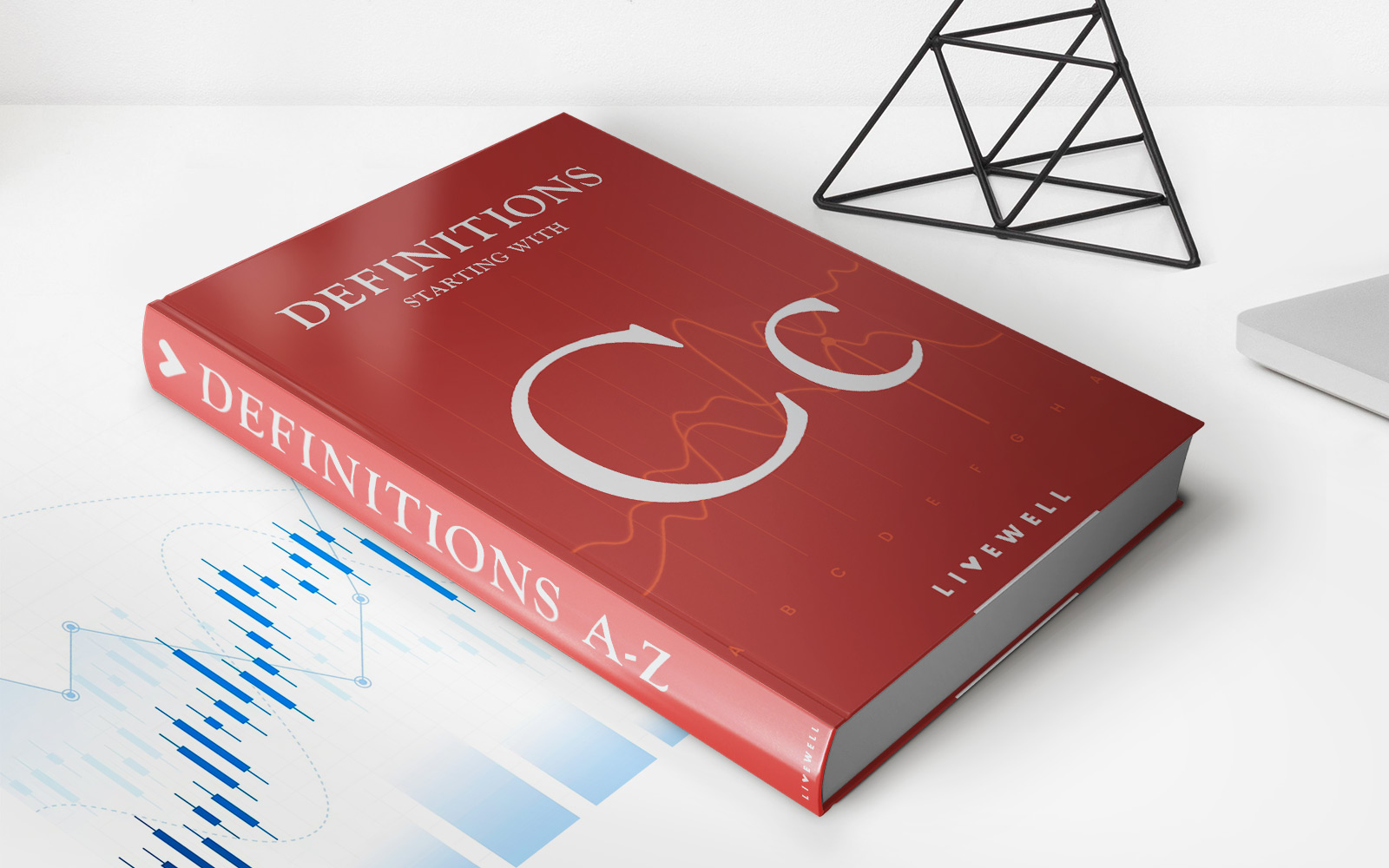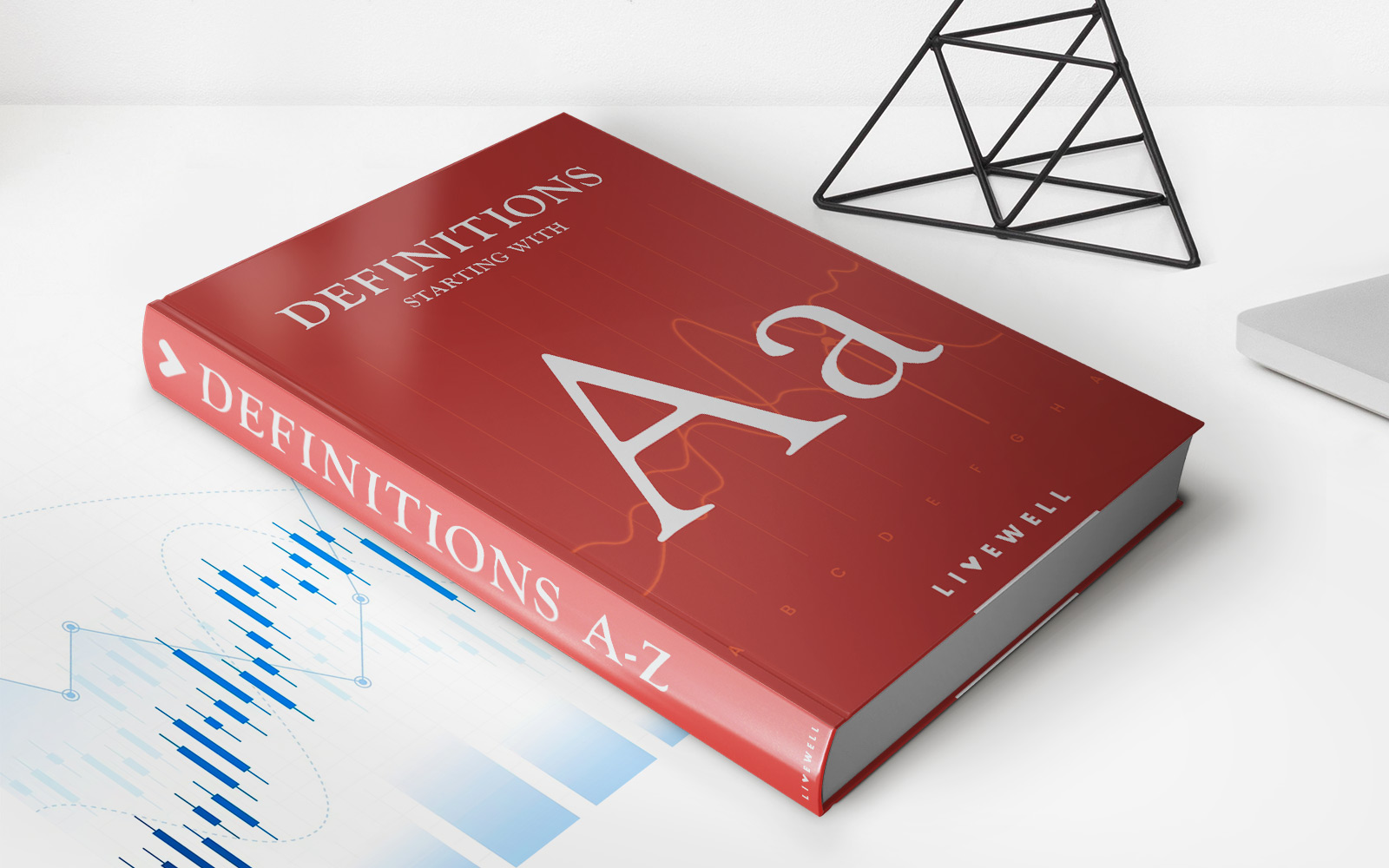

Finance
What Are Certificates Of Deposit
Modified: December 29, 2023
Discover what certificates of deposit are and how they can help you with your finance goals. Explore the benefits of this secure investment option.
(Many of the links in this article redirect to a specific reviewed product. Your purchase of these products through affiliate links helps to generate commission for LiveWell, at no extra cost. Learn more)
Table of Contents
- Introduction
- Definition of Certificates of Deposit (CDs)
- How Certificates of Deposit Work
- Types of Certificates of Deposit
- Pros and Cons of Investing in Certificates of Deposit
- Factors to Consider Before Investing in Certificates of Deposit
- How to Invest in Certificates of Deposit
- Risks Associated with Certificates of Deposit
- Conclusion
Introduction
Welcome to the world of financial investments, where you have a wide range of options to grow your wealth. One such option that offers stability and security is the Certificates of Deposit (CDs). Whether you are a seasoned investor or just getting started, understanding the basics of Certificates of Deposit can help you make informed decisions about your financial future.
Certificates of Deposit are a type of time deposit offered by banks and financial institutions. They are often considered a low-risk investment option, making them popular among conservative investors. With their fixed interest rates and guaranteed returns, CDs provide a predictable and stable avenue for growing your money.
In this article, we will explore the intricacies of Certificates of Deposit, including how they work, the different types available, the pros and cons of investing in CDs, factors to consider before investing, and how to go about investing in them. Additionally, we will highlight the potential risks associated with CDs to ensure you have a comprehensive understanding of this investment vehicle.
By the end of this article, you will have the knowledge and confidence to determine if Certificates of Deposit align with your financial goals and risk tolerance. So, let’s dive in and explore the world of Certificates of Deposit!
Definition of Certificates of Deposit (CDs)
Certificates of Deposit (CDs) are financial instruments offered by banks and credit unions that allow individuals to invest a fixed amount of money for a specific period of time, known as the term or maturity period. In return for depositing their funds, investors receive a fixed interest rate that is higher than traditional savings accounts.
CDs are considered time deposits because they have a predetermined maturity date, typically ranging from a few months to several years. Once the maturity period is reached, investors can choose to withdraw their initial deposit along with any accumulated interest, or roll it over into a new CD.
The main distinguishing feature of CDs is their fixed interest rate, which is agreed upon at the time of investment and remains constant throughout the term. This provides investors with predictable returns, making CDs an attractive option for those who prioritize stability and a guaranteed rate of return.
Furthermore, CDs are insured by the Federal Deposit Insurance Corporation (FDIC) for up to $250,000 per depositor, per insured bank, providing an added layer of security. This means that even in the event of a bank failure, investors will not lose their principal amount invested.
It’s worth noting that the interest earned on CDs is typically higher compared to regular savings accounts because the funds are locked in for a specified term. The longer the term of the CD, the higher the interest rate tends to be, rewarding investors for their commitment to keeping their money deposited for a longer period of time.
Overall, Certificates of Deposit offer a conservative and secure way to grow your savings with guaranteed returns. However, as with any investment, it’s important to understand the pros and cons before deciding to allocate your funds to CDs. In the next section, we will delve deeper into how Certificates of Deposit work, giving you a more comprehensive understanding of this investment option.
How Certificates of Deposit Work
Certificates of Deposit (CDs) operate on a simple and straightforward principle. When you invest in a CD, you agree to deposit a specific amount of money with a bank or credit union for a predetermined length of time, known as the term or maturity period. During this time, the deposited funds are inaccessible without incurring penalties or forfeiting the interest earned.
The key elements of how CDs work are as follows:
- Deposit Amount: When opening a CD, you must specify the amount of money you wish to invest. This can range from a few hundred dollars to thousands or more.
- Term Length: CDs have fixed maturity dates, which can vary widely. The most common terms range from three months to five years. The longer the term, the higher the interest rate tends to be.
- Fixed Interest Rate: Unlike other investments such as stocks or bonds, CDs offer a fixed interest rate. This means that the rate remains constant throughout the entire term of the CD. The interest rate is agreed upon at the time of purchase and is typically higher than what you would earn in a regular savings account.
- Interest Payments: The interest earned on a CD can be paid out in various ways. Some CDs compound the interest and add it to the principal, allowing for even greater returns over time. Others pay out the interest on a regular basis, such as monthly, quarterly, or annually. Additionally, some CDs offer the option to have the interest paid directly to you, while others may offer the choice to reinvest the interest into the CD.
- Penalties for Early Withdrawal: As mentioned earlier, CDs are time deposits, and the funds are expected to remain untouched until the maturity date. However, there are situations where you may need to access your money before the end of the term. If you withdraw funds from a CD before the maturity date, you may face penalties, such as a loss of earned interest or even a percentage of the principal amount.
- FDIC Insurance: CDs are protected by the Federal Deposit Insurance Corporation (FDIC), which guarantees depositors’ funds up to $250,000 per depositor, per insured bank. This insurance provides peace of mind, knowing that even in the event of a financial institution’s failure, your investment is protected.
Overall, CDs offer a simple and secure investment option with a guaranteed return. By understanding how CDs work, you can assess whether this type of investment aligns with your financial goals and risk tolerance. In the next section, we will explore the different types of Certificates of Deposit available.
Types of Certificates of Deposit
Certificates of Deposit (CDs) come in various forms, each offering different features and benefits. Understanding the different types of CDs can help you choose the one that best suits your financial goals and investment strategy. Here are some common types of Certificates of Deposit:
- Traditional CDs: These are the most common type of CDs, where you deposit a fixed amount of money for a specified term and earn a fixed interest rate. Traditional CDs typically offer higher interest rates for longer-term commitments.
- Callable CDs: Callable CDs give the issuing bank the option to “call back” the CD before the maturity date. If the bank chooses to exercise this option, they will repay the investor the principal amount along with any accrued interest. Callable CDs often come with slightly higher interest rates compared to traditional CDs to compensate for the possibility of early redemption.
- Bump-up CDs: Bump-up CDs allow investors to request an increase in the interest rate of their CD before the maturity date. This feature is advantageous if interest rates rise after you purchase the CD. However, bump-up CDs typically come with lower initial interest rates compared to traditional CDs.
- Jumbo CDs: Jumbo CDs require a higher minimum deposit compared to regular CDs. They are ideal for investors with a significant amount of money to invest and are often associated with higher interest rates.
- Brokered CDs: Brokered CDs are purchased through brokerage firms rather than directly from the issuing bank. These CDs provide access to a wider range of banks and often offer higher interest rates. However, it’s important to note that brokered CDs may come with additional fees and have stricter early withdrawal penalties.
- IRA CDs: Individual Retirement Account (IRA) CDs are designed specifically for retirement savings. These CDs offer tax advantages, as the funds are deposited into a tax-advantaged retirement account, such as a Traditional IRA or Roth IRA. IRA CDs come with the same features as traditional CDs but offer the additional benefit of tax-deferred or tax-free growth.
It’s important to carefully consider the terms and features of each type of CD to determine which one aligns with your financial goals and risk tolerance. Additionally, keep in mind that different financial institutions may offer variations of these CD types, so it’s always beneficial to shop around and compare the options available to you.
Now that we have explored the types of Certificates of Deposit, let’s move on to the next section, where we will discuss the advantages and disadvantages of investing in CDs.
Pros and Cons of Investing in Certificates of Deposit
Investing in Certificates of Deposit (CDs) offers both advantages and disadvantages, which are essential to consider when deciding if this investment option is suitable for you. Let’s explore the pros and cons of investing in CDs:
Pros:
- Stability and Security: CDs are known for their stability and security. Your principal investment is guaranteed and insured by the FDIC, providing peace of mind even in uncertain financial times.
- Predictable Returns: With a fixed interest rate, CDs offer predictable returns. You know exactly how much interest you will earn over the term of the CD, making it easier to plan and budget.
- Low Risk: Compared to more volatile investment options such as stocks or mutual funds, CDs are relatively low-risk. As long as you hold the CD until maturity, you can be confident in earning the specified interest rate.
- Diversification: Certificates of Deposit can be an excellent addition to a diversified investment portfolio. By allocating a portion of your funds to CDs, you can balance higher-risk investments and potentially reduce overall portfolio volatility.
- Higher Interest Rates: CDs generally offer higher interest rates compared to regular savings accounts. This allows your money to grow at a faster rate and potentially outpace inflation.
Cons:
- Limited Liquidity: Unlike savings accounts or money market accounts, accessing funds from a CD before the maturity date can result in penalties. This limited liquidity may not be suitable for individuals who anticipate needing immediate access to their money.
- Opportunity Cost: Since CDs have fixed interest rates, you may miss out on higher returns if interest rates rise during the term of your CD. This is particularly relevant for long-term CDs where the potential for missed opportunities can be greater.
- Inflation Risk: CD returns may not keep pace with inflation. While the interest earned provides a guaranteed return, it may not be sufficient to offset the impact of rising prices over time.
- Interest Rate Risk: When investing in long-term CDs, you expose yourself to interest rate risk. If interest rates increase, the fixed rate offered by your CD may become less competitive compared to other investment options.
- Minimum Deposit Requirements: Some CDs may have minimum deposit requirements that may not be feasible for everyone. Jumbo CDs, in particular, require a significant investment amount.
Considering these pros and cons will help you weigh the benefits and drawbacks of investing in Certificates of Deposit. Keep in mind that the decision to invest in CDs should align with your financial goals, risk tolerance, and liquidity needs.
Next, we will discuss important factors to consider before investing in Certificates of Deposit.
Factors to Consider Before Investing in Certificates of Deposit
Before diving into investing in Certificates of Deposit (CDs), it’s crucial to consider various factors to ensure this investment option aligns with your financial goals and needs. Here are some key factors to consider before investing in CDs:
1. Investment Horizon:
Consider your investment horizon and time frame. CDs typically have fixed terms ranging from a few months to several years. It’s important to select a term that matches your financial goals and when you anticipate needing access to the funds.
2. Interest Rates:
Compare the interest rates offered by different financial institutions. Interest rates can vary and may change over time. Research the current market rates to ensure you are getting a competitive rate on your investment.
3. Penalties for Early Withdrawal:
Understand the penalties associated with early withdrawal. If you anticipate needing access to your funds before the maturity date, consider CDs that have more lenient or lower penalties for early withdrawal.
4. FDIC Insurance:
Verify that the bank offering the CD is FDIC-insured. This helps ensure the safety and security of your investment, as the FDIC insures deposits up to $250,000 per depositor, per insured bank.
5. Callable CDs:
If considering callable CDs, be aware of the possibility that the issuing bank may exercise its option to call back the CD before maturity. Evaluate the potential impact of early redemption on your investment plans.
6. Inflation and Interest Rate Expectations:
Consider the current inflation rates and the outlook for future interest rates. If inflation is high, the fixed interest rate on a CD may not keep up with the rising cost of living. Similarly, if interest rates are expected to increase, it may be wise to avoid long-term CDs to capitalize on potentially higher rates in the future.
7. Financial Goals and Risk Tolerance:
Assess your financial goals and risk tolerance. CDs are considered low-risk investments, but they may not offer the growth potential or liquidity that other investments may provide. It’s important to align your investment strategy with your long-term financial objectives.
8. Diversification:
Consider how CDs fit into your overall investment portfolio. Diversification helps spread risk across different asset classes and can provide a balance between stability and growth. Evaluate the percentage of your portfolio that should be allocated to CDs based on your risk tolerance and investment goals.
By carefully considering these factors, you can make informed decisions when investing in Certificates of Deposit. It’s also advisable to consult with a financial advisor to ensure your investment strategy aligns with your unique financial situation and long-term objectives.
Next, we will discuss how to invest in Certificates of Deposit.
How to Invest in Certificates of Deposit
Investing in Certificates of Deposit (CDs) is a relatively straightforward process. Follow these steps to invest in CDs:
1. Assess Your Financial Goals:
Determine your financial goals and the role CDs will play in your investment strategy. Consider factors such as your investment horizon, desired returns, and risk tolerance.
2. Research Financial Institutions:
Research different financial institutions that offer CDs, including banks, credit unions, and online banks. Compare their interest rates, customer reviews, terms, and conditions to find the best options.
3. Determine the Type of CD:
Decide on the type of CD that suits your needs, such as traditional CDs, callable CDs, or IRA CDs. Consider factors like the flexibility of early withdrawals, potential for rate bumps, and tax implications.
4. Compare Interest Rates and Terms:
Compare interest rates and terms offered by various financial institutions. Look for competitive rates and choose a term that aligns with your investment goals.
5. Calculate Potential Returns:
Use online calculators or consult with a financial advisor to estimate the potential returns on your CD investment based on the interest rate and term. This will help you evaluate the growth potential of your investment.
6. Open a CD Account:
Once you have chosen a financial institution and CD type, open a CD account with the institution. Provide the necessary identification and funding to initiate the investment.
7. Deposit Funds:
Deposit the desired amount into your CD account. Some financial institutions may have minimum deposit requirements, so ensure you meet those criteria.
8. Review Terms and Conditions:
Thoroughly review the terms and conditions of the CD agreement, including the interest rate, maturity date, penalties for early withdrawal, and any other relevant information. Make sure you understand all the details before finalizing the investment.
9. Monitor the CD:
Keep track of your CD’s progress by monitoring its maturity date, interest payments, and any changes in the terms. Set reminders to review the CD near its maturity date to decide whether to reinvest, withdraw, or make any necessary adjustments.
10. Consider Laddering CDs:
If you have a larger amount to invest, consider laddering your CDs. This involves investing in multiple CDs with different maturity dates to create a staggered portfolio. This strategy helps maintain liquidity while taking advantage of potentially higher interest rates on longer-term CDs.
By following these steps, you can confidently invest in Certificates of Deposit and start growing your savings with predictable returns.
In the next section, we will discuss the potential risks associated with Certificates of Deposit.
Risks Associated with Certificates of Deposit
While Certificates of Deposit (CDs) are generally considered low-risk investments, there are still some risks to be aware of. Understanding these risks can help you make informed decisions when investing in CDs. Here are some potential risks associated with Certificates of Deposit:
1. Interest Rate Risk:
One of the main risks with CDs is the potential for interest rate fluctuations. If interest rates rise after you have invested in a CD with a fixed interest rate, you may miss out on higher returns compared to other investment options. Conversely, if interest rates drop, your fixed interest rate may become more competitive, providing an advantage.
2. Inflation Risk:
CD returns may not keep pace with inflation. Inflation erodes the purchasing power of your investment over time, and if the interest rate on your CD does not outpace inflation, your real returns may be diminished. This is particularly relevant for longer-term CDs, where the impact of inflation can be more pronounced.
3. Opportunity Cost:
Investing in a CD ties up your funds for a specific term. If you have an immediate need for the money or if other investment opportunities arise with potentially higher returns, you may miss out on those opportunities due to the lack of liquidity. Consider the potential opportunity cost when choosing to invest in a CD.
4. Early Withdrawal Penalties:
If you need to access your funds before the maturity date of the CD, you may face penalties for early withdrawal. These penalties can vary depending on the financial institution and the specific terms of the CD. Be aware of these penalties and consider whether you may need immediate access to your funds before committing to a CD.
5. Callable CD Risk:
If you invest in a callable CD, there is a risk that the issuing bank may exercise its option to “call back” the CD before the maturity date. This could result in early redemption and the return of your principal and any accrued interest. However, this can disrupt your investment plans and potentially limit your ability to earn higher returns in a rising interest rate environment.
6. Credit Risk:
Although rare, there is a small level of credit risk associated with CDs. This risk arises if the issuing financial institution defaults on its obligations or becomes insolvent. However, CDs are typically insured by the Federal Deposit Insurance Corporation (FDIC) for up to $250,000 per depositor, per insured bank, providing an added layer of protection.
It’s important to carefully consider these risks and weigh them against the potential benefits and your individual financial goals. Diversifying your investment portfolio, staying informed about changes in interest rates, and aligning your investment strategy with your risk tolerance can help mitigate some of these risks.
Now that we have explored the risks associated with Certificates of Deposit, let’s move on to the concluding section to recap the key points discussed.
Conclusion
Certificates of Deposit (CDs) can be a valuable addition to your investment portfolio, offering stability, security, and predictable returns. Understanding the ins and outs of CDs is vital before deciding to invest. We have covered several important aspects of CDs throughout this article.
We began by defining CDs as time deposits with fixed interest rates. We explored how they work, the different types available, the pros and cons of investing in CDs, factors to consider before investing, how to invest in CDs, and the potential risks associated with this investment option.
The advantages of investing in CDs include stability, predictable returns, and low risk. CDs offer higher interest rates compared to regular savings accounts, making them an attractive choice for conservative investors. Moreover, the FDIC insurance guarantees the safety of your investment up to $250,000 per depositor, per insured bank.
On the other hand, CDs may have limited liquidity, and the fixed interest rates could result in missed opportunities if interest rates rise. Additionally, inflation risk and early withdrawal penalties are important factors to consider. However, by carefully assessing your financial goals, understanding the risks, and diversifying your portfolio, you can make informed decisions when investing in CDs.
To invest in CDs, you should assess your investment horizon, research financial institutions, compare interest rates and terms, open a CD account, and deposit funds. Monitoring the CD’s progress is crucial, and laddering CDs can be a beneficial strategy for larger investments.
While CDs are generally considered low-risk, there are potential risks to be aware of. Interest rate fluctuations, inflation risk, opportunity cost, early withdrawal penalties, callable CD risk, and credit risk are factors that need to be taken into account.
Ultimately, deciding to invest in Certificates of Deposit depends on your individual financial situation, risk tolerance, and investment goals. Consider consulting with a financial advisor to create a comprehensive investment strategy that incorporates CDs alongside other investment options.
By gaining a thorough understanding of Certificates of Deposit and considering the information we have discussed, you can make informed decisions and make the most of this secure and predictable investment option.














